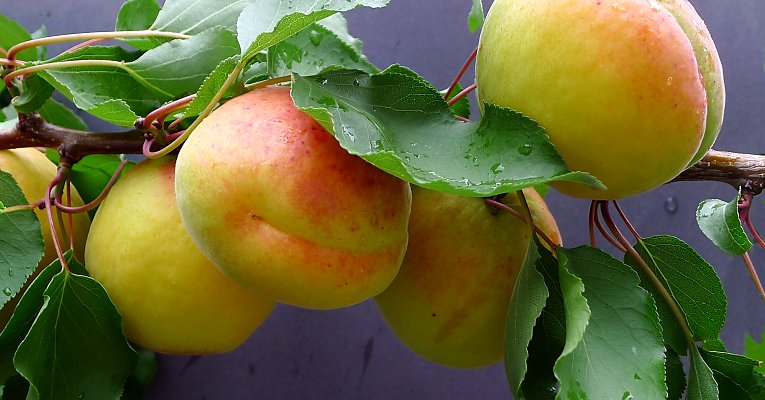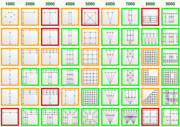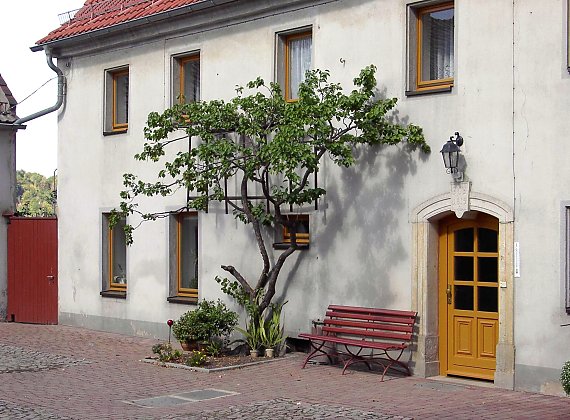Apricot
Apricots are very healthy when it come to their leaves, but they may drop fruit if the heat and water conditions are not right. Grown against a facade, they are more protected from rain and cold, and the fruit will ripen better. In milder wine-growing climates, apricot espalier trees are often easier to grow than peaches!
Lat.: Prunus armeniaca, auch Armeniaca vulgaris

How to thrive... where to find...
The apricot tree prefers mild wine-growing climates, i.e. regions where there are no winter frosts below 20 - 25 degrees (celsius). Locations in partial shade are good enough in these conditions. Apricots are very sensitive to late frosts. Growing the apricot tree on a facade (with no insulation) should help, as the heat loss of the building will protect the tree in colder temperatures. Facades with an overhanging roof will protect the apricot from rain. The soil should be kept "open" - that is, free from any other vegetation, Mulching the base of the tree is often beneficial. In colder climates, all apricot trees should be grafted on a frost resistant rootstock (such as "Hinduka") or on a plum rootstock (more information on grafting here (under 'peach espalier'). Apricots can be found in local nurseries or ordered online.
Characteristics and Pruning
When cultivated on an espalier, apricots are treated as a shaped tree. Apricots blossom white-pink in early spring, and ripen in summer. After the flowering period, the tree should be watered regularly or it may drop its fruit. Diseases and pests are not a common problem with apricot, but oo much fertiliser can compromise the taste of the apricots. The best known varieties in our latitudes (Germany) are "Nancyaprikose" (sweet and aromatic) and "Hungarian Best" (frost-resistant, but more sour in taste).
Climbing Supports for the Facade
Suitable cable trellis designs can be found at the bottom of this page. Choose a heavy or massive system; for a smaller tree, a medium trellis might suffice. Wooden trellises can also be used with apricot. Apricot wood is stiff; it is therefore difficult to train the trees in a symmetrical shape. Apricots should be trained into a free fan shape, just like with grapevine. In milder climates, the trees are easier to shape, and a double "U" form can be attempted. There should be at least 80 cm between the vertical branches. The trellis should have vertical wires every 35 - 40 cm so that the fruit-bearing shoots can also be bound to the trellis. Learn more under shaped trees. The trellis needs to be sturdy enough to firmly anchor the tree to the wall or facade.
Wire rope trellises for apricot trees
Please click on the graphic illustrations for details!
| = suitable | = of limited suitability | = unsuitable |





![[Translate to Englisch:] Marillenbaum am Wandspalier [Translate to Englisch:] Marillenbaum am Wandspalier](/fileadmin/_migrated/pics/marillenbaum_375.jpg)
![[Translate to Englisch:] Marille am Spalier [Translate to Englisch:] Marille am Spalier](/fileadmin/_migrated/pics/marille_spalier_375.jpg)





















































